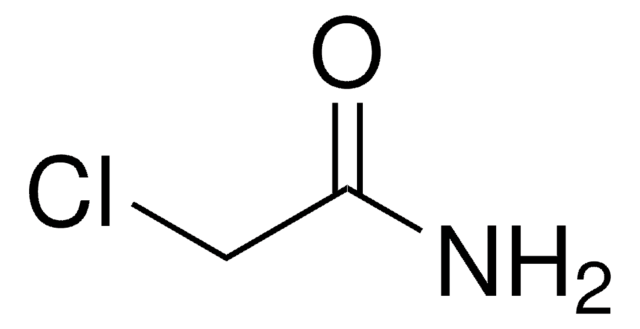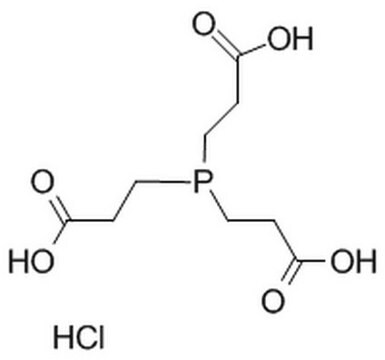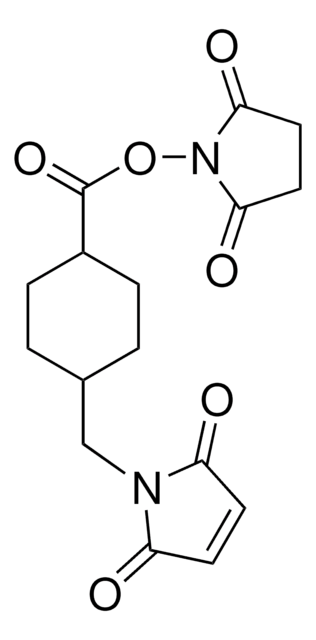68957
Tris(2-carboxyéthyl)phosphine hydrochloride
BioUltra, suitable for electrophoresis, SDS-PAGE tested
Synonyme(s) :
TCEP
About This Item
Produits recommandés
Gamme de produits
BioUltra
Essai
97.5-102.5%
Forme
powder
Technique(s)
electrophoresis: suitable
Solubilité
H2O: soluble
Adéquation
SDS-PAGE tested
Chaîne SMILES
Cl[H].OC(=O)CCP(CCC(O)=O)CCC(O)=O
InChI
1S/C9H15O6P.ClH/c10-7(11)1-4-16(5-2-8(12)13)6-3-9(14)15;/h1-6H2,(H,10,11)(H,12,13)(H,14,15);1H
Clé InChI
PBVAJRFEEOIAGW-UHFFFAOYSA-N
Vous recherchez des produits similaires ? Visite Guide de comparaison des produits
Description générale
Application
Caractéristiques et avantages
- TCEP.HCL lowers reactive oxygen species levels.
- It increases glutathione levels and mitochondrial content.
- It has anti-cancer effects.
Remarque sur l'analyse
Mention d'avertissement
Danger
Mentions de danger
Classification des risques
Eye Dam. 1 - Skin Corr. 1B
Code de la classe de stockage
8A - Combustible corrosive hazardous materials
Classe de danger pour l'eau (WGK)
WGK 1
Faites votre choix parmi les versions les plus récentes :
Déjà en possession de ce produit ?
Retrouvez la documentation relative aux produits que vous avez récemment achetés dans la Bibliothèque de documents.
Les clients ont également consulté
Articles
Step-by-step workflows for the intact mass analysis, peptide mapping, and N-glycan analysis of the monoclonal antibody― adalimumab, for an accurate characterization of the critical quality attributes (CQAs) to ensure drug safety and efficacy. Read more.
Protocoles
Step-by-step SEC-MS protocol for rapid glycoprofiling of a monoclonal antibody (mAb), consisting of antibody purification, a mAb reduction procedure, a mass spectrometer calibration, and a system suitability test.
A complete workflow for the intact and middle-up mass analysis of reduced and non-reduced monoclonal antibodies based on SEC-MS with sample preparation by protein-A affinity clean-up.
Contenu apparenté
Step-by-step reversed phase UHPLC-MS workflow for middle-up mass analysis of an immunoglobulin G antibody, consisting of antibody purification, IdeS proteolysis and reduction, mass spectrometer calibration, mAb quantification, and a system suitability test.
Notre équipe de scientifiques dispose d'une expérience dans tous les secteurs de la recherche, notamment en sciences de la vie, science des matériaux, synthèse chimique, chromatographie, analyse et dans de nombreux autres domaines..
Contacter notre Service technique









